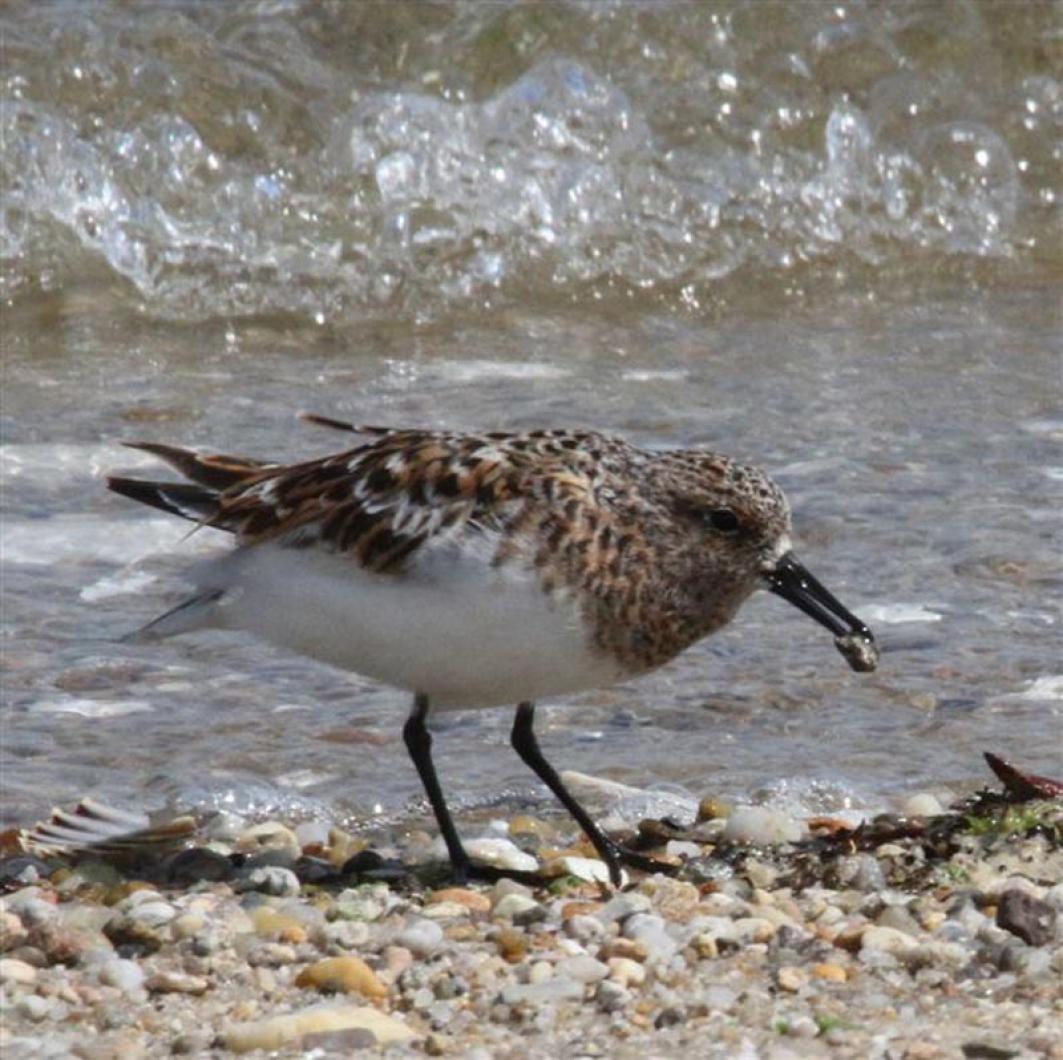The sky turned steel gray and then black. The thunder thudded to the northeast. The black clouds rolled in, bringing the booms and cracks closer. Lightning flashed all around. All at once the sounds of hail pelting on the roof stunned me. Several birds caught my eye as I looked out the window. First, a killdeer that was driven to earth by the hail that I observed — half jumping, half flying over the bank into the rosa rugosa for protection. The other was a yellow warbler that fell into the scrub oak and huddled close to the trunk under a canopy of leaves to avoid being beaten by the hailstones.
Humans can easily retreat to a home for shelter, but birds have to find protection from the elements come what may. One author suggested that “if you could x-ray a thick spruce or matted grapevine tangle during a thunderstorm, you’d probably see a number of songbirds cowering within.” I have observed eastern bluebirds and tree swallows head for their boxes during inclement weather, and probably all cavity nesters do the same.
Research on weather affecting bird life proved that hailstorms are the most destructive weather pattern for birds, even more so than hurricanes or tornadoes. It is the young birds, the nestlings and fledglings, that are affected the most by hail. It is not just the hail pelting on them, but the exposure to sudden cold, hail and the rain that usually follows that cause high mortality.
This said, I would add that although storms are hard on bird life, birds have been dealing with weather forever; human structures are far worse. Skyscrapers with their bright lights, tall towers that are lit, and lighted wind turbines are more of a threat than weather. Birds, drawn by the lights, become disoriented and hit the buildings, towers or turbines, killing thousands annually.
Bird Sightings
Great news from Dick Jennings on Chappaquiddick. He has located the merlin nest and discovered that the pair produced two young, one that is about to fly and the other that is still hanging around the nest. Nice spotting, Dick!
Jeff Bernier sent photos of an Empidonax flycatcher that he took at Katama. These flycatchers are very difficult to separate. There are two that are possible, the willow and the alder. The willow has bred at Katama this year and in the past. The only sure way to tell the difference is by the call. Get that bird to sing!
John Grandon reports that while off Cedar Tree Neck by boat on July 14 he heard a bobwhite calling. He answered it and had a bit of a conversation with the quail. John noted, as have others, that it is the first time in years he had heard bobwhite on the Vineyard.
Linda Mariano sent a series of photographs showing the horrors of brown-headed cowbirds. The shots showed a yellow warbler feeding a cowbird almost twice its size. Cowbirds lay their eggs in other species’ nests and they split. Frequently the eggs and young of the species the cowbirds parasitize do not survive, but the cowbirds do.
Lanny McDowell and Jeffrey Kimball, the producer of the film Birder’s: The Central Park Effect, birded Norton Point on July 19 and agreed that shorebird migration has started. Their best bird was a stilt sandpiper. Other birds of note were six lesser yellowlegs, red knots, short-billed dowitchers and sanderlings, some still showing the orange tinge around the neck and shoulders of breeding plumage.
John Banks birded Sarson’s Island on July 22 and spotted all three plovers (piping, black-bellied and semipalmated), five greater yellowlegs, four ruddy turnstones, two semipalmated and one least sandpiper, three short-billed dowitchers, willet and American oystercatchers with young.
Pam Sowizral spotted a yellow-crowned night heron at Katama on July 20, and on July 23 Ken Magnuson photographed a yellow-crowned night heron at Eel Pond in Edgartown. Pam Sowizral also reported seeing a pectoral sandpiper at Norton Point. I wish she had photographed it, as this is early and in an interesting habitat. But then, during migration, anything goes.
On July 20 Flip Harrington and I saw a spotted sandpiper, a great egret and a great blue heron on Tisbury Great Pond. On July 21 Allan Keith and I observed a spotted sandpiper at Wades Cove on Chilmark Pond.
Waren Woessner and I birded Red Beach and Dogfish Bar in Aquinnah on July 24 and found large numbers of sanderlings, semipalmated sandpipers and plovers, piping plovers, greater yellowlegs and ruddy turnstones. We also saw laughing and ring-billed gulls, and watched herring gulls scooping invertebrates from the surface of the water off Lobsterville. Later in the day Flip Harrington and I saw a spotted sandpiper in Menemsha Pond.
Biodiversity Works sent out its first newsletter. Briefly, it reported that the Fourth of July storm caused havoc for many of the species they monitor (piping plovers, American oystercatchers, least and common terns). Nests were overwashed and lost. Luckily, they all re-nested and are doing well. So far there are more chicks of species than last year and some birds are still on nest. For more information, log onto biodiveritworksMV.org.
Please report your bird sightings to the Martha’s Vineyard Bird Hotline at 508-645-2913 or e-mail to birds@mvgazette.com. Susan B. Whiting is the co-author of Vineyard Birds and Vineyard Birds II. Her website is vineyardbirds2.com.




Comments
Comment policy »